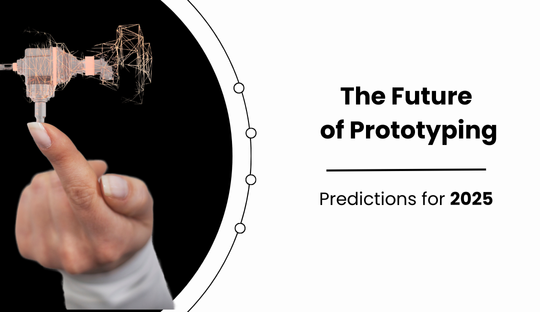
The Future of Prototyping: Predictions for 2025
Prototyping has always been a crucial part of the design and development process, serving as the bridge between concept and reality. As technology continues to advance, the future of prototyping is set to evolve in remarkable ways. For Flykez CO, a leading creative brand company in Finland, staying ahead of these trends is vital to maintaining their competitive edge. Here are some predictions for the future of prototyping as we approach 2025.
1. Integration of AI in Prototyping
Artificial Intelligence (AI) is poised to revolutionize prototyping by automating repetitive tasks and providing intelligent insights. AI can analyze user behavior data to suggest design improvements, making the prototyping process more efficient and user-centric.
Key Benefits:
- Enhanced Efficiency: AI can automate mundane tasks, allowing designers to focus on creativity and innovation.
- Data-Driven Insights: By analyzing vast amounts of user data, AI can offer valuable suggestions to improve design elements.
- Personalization: AI can help create personalized prototypes that cater to specific user preferences and behaviors.
2. Prototyping for VR and AR
Virtual Reality (VR) and Augmented Reality (AR) are no longer just buzzwords; they are becoming integral to the design process. Prototyping for VR and AR will enable designers to create immersive experiences and visualize products in a three-dimensional space.
Key Benefits:
- Immersive Visualization: Designers can create and test prototypes in a simulated environment, enhancing the user experience.
- Interactive Prototypes: VR and AR allow for the creation of interactive prototypes that can be tested and iterated upon in real-time.
- Enhanced Collaboration: Teams can collaborate in a virtual space, making it easier to share and discuss ideas.
3. Streamlined Prototyping Workflow
The prototyping workflow is set to become more streamlined and integrated with other design and development tools. This integration will facilitate better collaboration and communication among team members, ensuring a more cohesive design process.
Key Benefits:
- Seamless Integration: Prototyping tools will integrate with other design software, allowing for a smooth transition from wireframes to high-fidelity prototypes.
- Improved Collaboration: Real-time collaboration features will enable team members to work together more effectively, regardless of their location.
- Enhanced Version Control: Advanced version control will make it easier to track changes and revert to previous versions if needed.
4. Focus on Prototyping Best Practices
As prototyping becomes more sophisticated, adhering to best practices will be more important than ever. These practices ensure that prototypes are not only functional but also effective in communicating design ideas to stakeholders. Also Read About Prototyping with Figma: A Detailed Tutorial
Key Benefits:
- Consistency: Following best practices ensures that prototypes are consistent and adhere to industry standards.
- Efficiency: Streamlined workflows and best practices reduce the time and effort required to create high-quality prototypes.
- Stakeholder Engagement: Well-designed prototypes facilitate better communication with stakeholders, ensuring that their feedback is accurately captured and incorporated.
5. Advances in Prototyping Presentations
Presenting prototypes to stakeholders will become more dynamic and interactive. Advanced presentation tools will allow designers to showcase their prototypes in more engaging and impactful ways.
Key Benefits:
- Interactive Presentations: Stakeholders can interact with prototypes during presentations, providing immediate feedback.
- Enhanced Visualization: High-fidelity visuals and animations will make it easier to convey design ideas.
- Real-Time Adjustments: Designers can make adjustments on the fly during presentations, ensuring that stakeholder feedback is immediately addressed.
6. Avoiding Prototyping Mistakes
As prototyping techniques evolve, it is crucial to avoid common mistakes that can derail the design process. These mistakes include overcomplicating designs, ignoring user feedback, and failing to test prototypes adequately.
Key Benefits:
- Simplicity: Keeping prototypes simple ensures that they are easy to understand and iterate upon.
- User-Centric Design: Regular testing and incorporating user feedback ensure that prototypes meet user needs.
- Thorough Testing: Comprehensive testing helps identify and address potential issues before the final product is developed.
Conclusion
The future of prototyping is bright, with advancements in AI, VR, AR, and workflow integration set to transform the way designers create and test their ideas. For Flykez CO, embracing these trends will be essential in delivering innovative and user-centric solutions. By focusing on best practices, avoiding common mistakes, and leveraging advanced presentation tools, Flykez CO can continue to lead the way in the creative brand industry. For more information on our services and to see how we can enhance your digital presence, visit Flykez CO.
